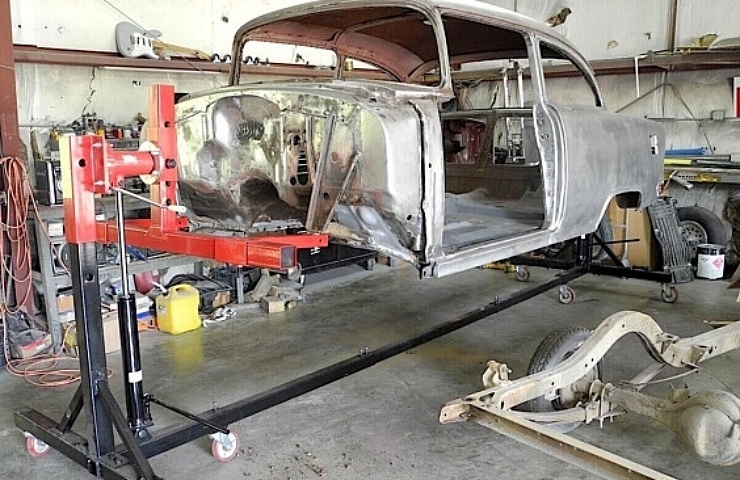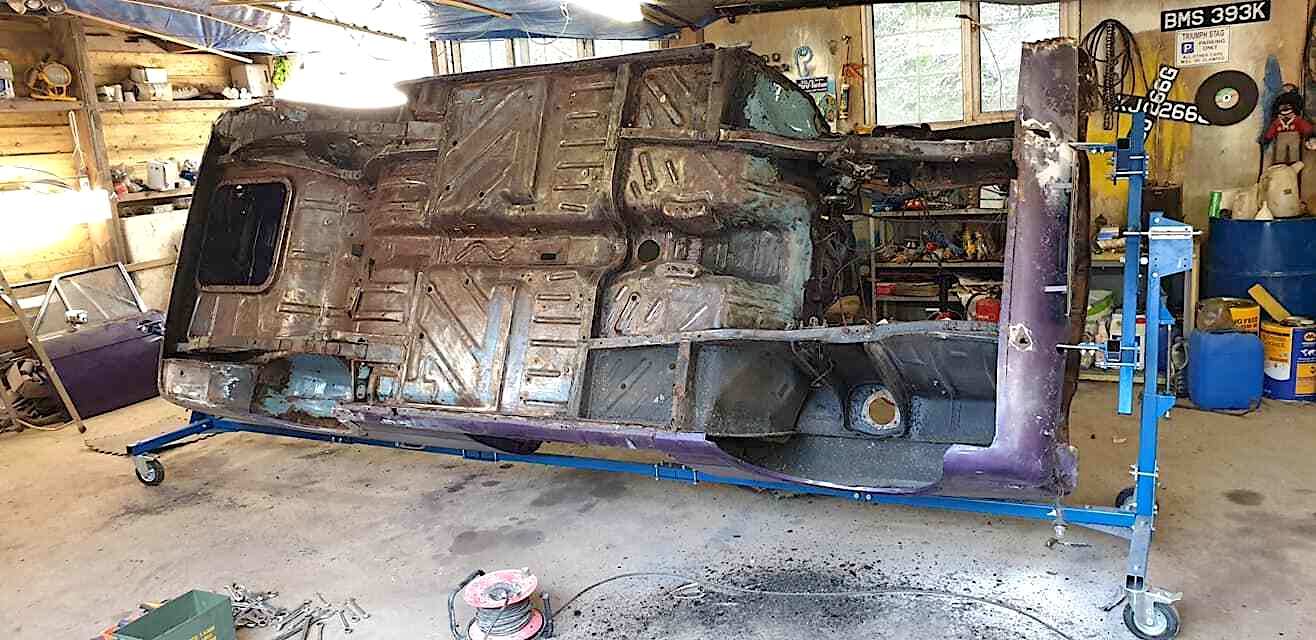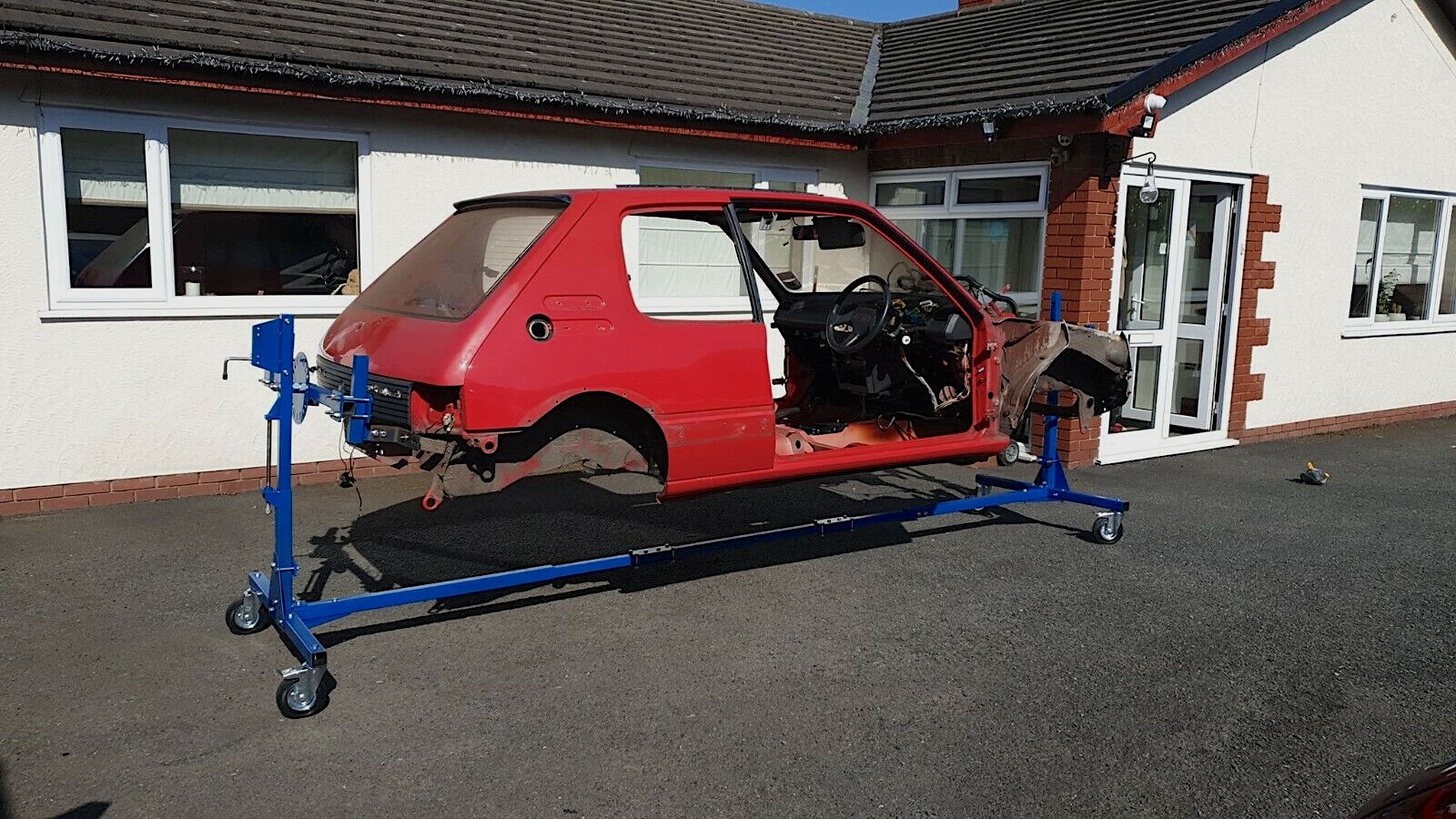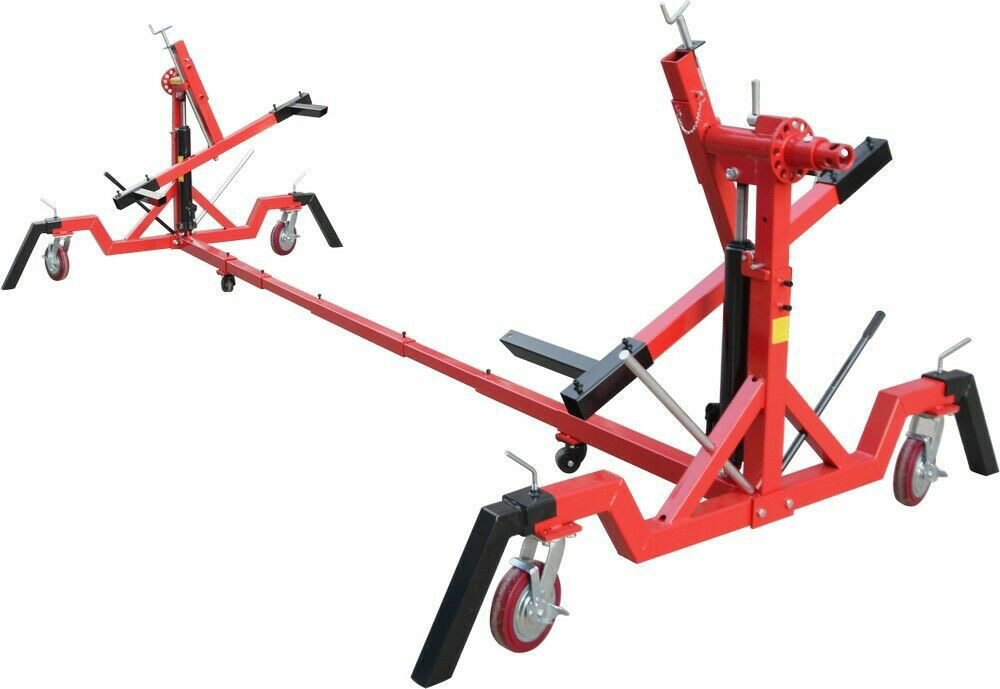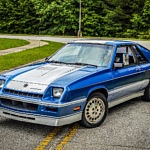Here’s the definition:
A rotisserie restoration completely reconditions a disassembled car body or frame. After being mounted on a rotating rotisserie frame, the car’s core structure can be precisely rotated and angled to remove rust, damage, or decay.
A rotisserie restoration doesn’t automatically guarantee high-quality workmanship. But if a builder goes into the effort of using a rotisserie, you know the goal is a careful and complete restoration.
Shop now for an auto rotisserie machineRotisserie Basics
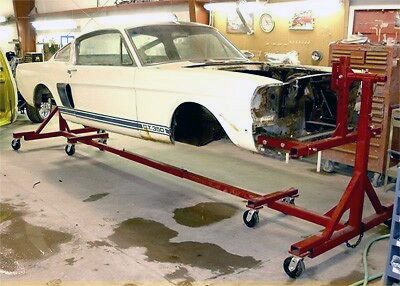
Before mounting the car on the rotisserie, remove the engine, transmission, glass, and other components. The idea is to eliminate weight, liquids, and glass that could crack from flexing. You should also remove additional internal pieces that are not secure, providing the best access to the body or frame.
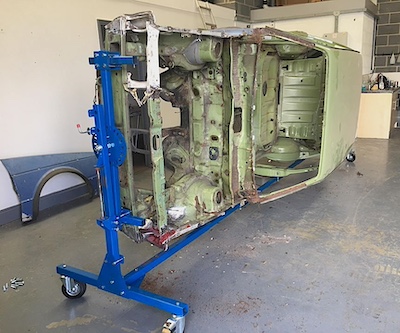
Most rotisseries are sold as kits. Expect it to arrive in a large crate weighing at least 500 pounds. Following the instructions, you can easily assemble a unit in a day.
Uses for the Rotisserie
After a car is positioned correctly on the rotisserie, a builder can easily rotate the vehicle to gain the best access to specific areas.
Imagine that you need to replace some rusty spots on the bottom edge of your car’s door sills. That’s a common repair. After the vehicle is on the rotisserie, you can rotate the body on its side to the perfect angle to weld in a patch panel.
Then, you can grind off the welds, smooth the joint with minimal filler, and block-sand the body panel until it is as smooth as glass. All of this can be completed without bending over and contorting your back. When you’re finished with one side, flip the car around and do the other. That’s the beauty of a rotisserie.
A rotisserie is a great tool for removing layers of undercoating from the bottom of a car. If you need to paint the car’s underside, imagine how much easier it would be to access all the hard-to-reach bits and pieces using a rotisserie.
Shop now for an auto rotisserie machineWhat Makes the Best Car Rotisserie?
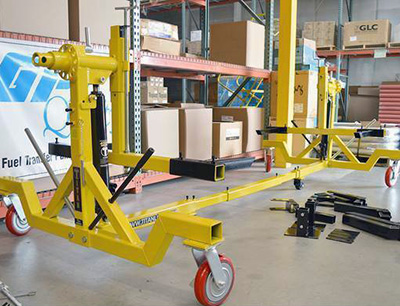
A rotisserie with a set of casters allows you to move it around the shop quickly.
Here are the key features of a high-quality rotisserie machine:
- It needs to be long and strong enough to hold your car firmly in place. The largest units can hold over 6,000 pounds and expand beyond 24 feet.
- Locking casters or wheels will make moving the rotisserie around your garage easier.
- Mounting brackets should be available for your specific vehicle make and model. Some brackets allow for adjustments if you use the rotisserie on several vehicles.
- Aluminum construction is lighter weight but often more expensive. Look for a frame built from stock that is at least 3/16 inch thick.
- The car should be able to spin 360 degrees. Some devices offer fewer locking points as the vehicle rotates. Fewer locking points mean you might not be able to get the car at the optimal angle for a specific job. Consider a unit that locks in place every 15 degrees for the best car placement.
- Some units offer hydraulic jacks to lift the car to the desired height. That’s easier to use than a manual rotisserie. Even stripped-down a car or chassis is heavy, and letting hydraulic jacks do the heavy lifting makes sense. Ensure your garage space is high enough to accommodate rotisserie restoration if the vehicle is lifted to the maximum point.
You might use the rotisserie for a few months to do a car’s bodywork and then not again for a long time. So research if the unit breaks down when it’s not in use. Or consider selling it on eBay Motors if you are “one and done.” Plan on spending between $1,000 and $2,000 for a new rotisserie, depending on your needs and options.
If you are adventurous and skilled, you can find DIY plans for a rotisserie online. That could save you money, but there are obvious safety concerns. A home-built rotisserie needs to support the weight of your vehicle at all different angles. Besides, building a rotisserie is another project to complete before you can start restoring your dream car.

